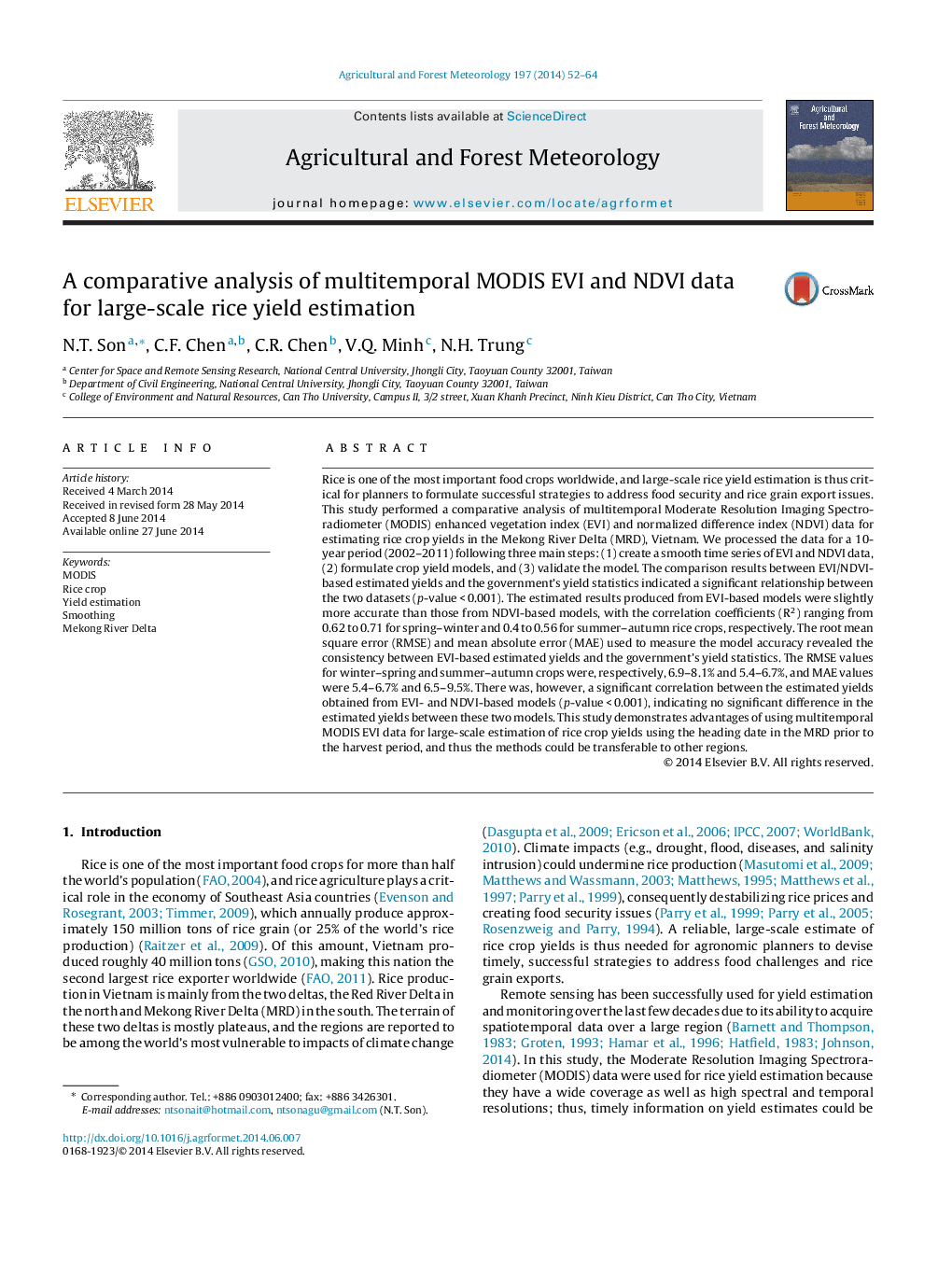| کد مقاله | کد نشریه | سال انتشار | مقاله انگلیسی | نسخه تمام متن |
|---|---|---|---|---|
| 81703 | 158332 | 2014 | 13 صفحه PDF | دانلود رایگان |

• Study comparatively analyzed MODIS EVI and NDVI data for modeling rice crop yields.
• EVI-based models were slightly more accurate than those from NDVI-based models.
• The approach could be used to estimate rice production prior the harvesting period.
Rice is one of the most important food crops worldwide, and large-scale rice yield estimation is thus critical for planners to formulate successful strategies to address food security and rice grain export issues. This study performed a comparative analysis of multitemporal Moderate Resolution Imaging Spectroradiometer (MODIS) enhanced vegetation index (EVI) and normalized difference index (NDVI) data for estimating rice crop yields in the Mekong River Delta (MRD), Vietnam. We processed the data for a 10-year period (2002–2011) following three main steps: (1) create a smooth time series of EVI and NDVI data, (2) formulate crop yield models, and (3) validate the model. The comparison results between EVI/NDVI-based estimated yields and the government's yield statistics indicated a significant relationship between the two datasets (p-value < 0.001). The estimated results produced from EVI-based models were slightly more accurate than those from NDVI-based models, with the correlation coefficients (R2) ranging from 0.62 to 0.71 for spring–winter and 0.4 to 0.56 for summer–autumn rice crops, respectively. The root mean square error (RMSE) and mean absolute error (MAE) used to measure the model accuracy revealed the consistency between EVI-based estimated yields and the government's yield statistics. The RMSE values for winter–spring and summer–autumn crops were, respectively, 6.9–8.1% and 5.4–6.7%, and MAE values were 5.4–6.7% and 6.5–9.5%. There was, however, a significant correlation between the estimated yields obtained from EVI- and NDVI-based models (p-value < 0.001), indicating no significant difference in the estimated yields between these two models. This study demonstrates advantages of using multitemporal MODIS EVI data for large-scale estimation of rice crop yields using the heading date in the MRD prior to the harvest period, and thus the methods could be transferable to other regions.
Journal: Agricultural and Forest Meteorology - Volume 197, 15 October 2014, Pages 52–64